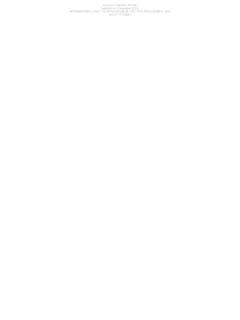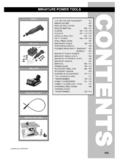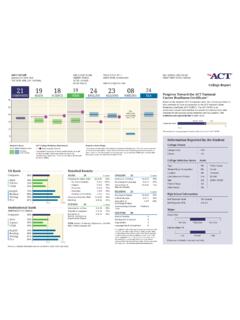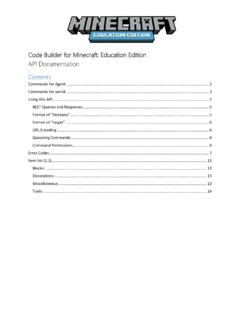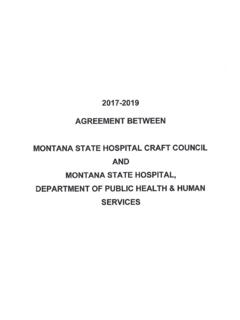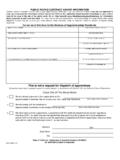Transcription of Visual Interpretation of the STAIR BUILDING CODE 2012 ...
1 Portions of this publication reproduce excerpts from the 2012 international residential code for One-and Two-Family Dwellings and 2012 international BUILDING code , international code Council, Inc., Washington, Reproduced with permission. All rights reserved. 2012 SMA, 877-500-5759 Second Interpretation of the STAIR BUILDING CODE2012 InternationalResidential CodeMINIMUM HEADROOM 6 -8 HEADROOMEQUIVALENT GRASPABILITY3-1/4 3-5/8 1-3/4 7-3/8 7-5/8 7-5/8 7-5/8 7-3/4 EXAMPLE STAIR IS WITHIN ACCEPTABLE code LIMITSGREATEST RISE 7-3/4 SMALLEST RISE 7-3/8 = 3/8 RISER HEIGHTEXAMPLE STAIR IS WITHIN ACCEPTABLE code LIMITSGREATEST TREAD DEPTH 10-3/8 SMALLEST TREAD DEPTH 10 = 3/8 10-3/8 10-1/8 10 10 TREAD DEPTHGUARD HEIGHTREQUIRED HEIGHTREQUIRED HEIGHTCURBC opyright 2012 SMATo the UserIf you find this document to be of significant value, then you will find it equally beneficial to associate with a member of the Stairbuilders Manufacturers Association (SMA).
2 The members of the SMA have taken on the task of influencing the development of responsible and functional BUILDING codes. They are the very individuals effectively communicating consistent Interpretation of each STAIR code . A resulting product of their effort is this Visual Interpretation . SMA members know their craft of STAIR Design and Construction and they know BUILDING Codes. You are encouraged to contact a member of the SMA before you begin your next stairway project. Our Members proudly display the SMA Member MembershipIf your work is related to stairs and you can prescribe to the ethics and quality standards of the SMA you may qualify for learn more about the SMA go to our website , and contact us or call toll free this DocumentThe Stairbuilders and Manufacturers Association publishes Visual interpretations of BUILDING Codes to be accurate pictorial material void of editorial comment to aid in the understanding of the written code text.
3 We provide this document as a learning tool to aid designers, builders, homeowners, BUILDING officials, STAIR builders, and others in the shelter industry to accurately and consistently interpret the BUILDING code related to SMA has participated in the model code development process since 1988. We support the international code Council s (ICC) development process through our membership and are recognized and respected for our responsible efforts at code reform and Interpretation in addition to our trade and industry experience that we bring to the table. This experience and reputation is an asset to our continued efforts to provide safe stairways and reduce stairway accidents while allowing freedom of design, and aesthetic properties of addition to our experience in the code development process we provide technical writing and graphics assistance related to the IRC and IBC code Commentaries as published by the ICC for each SMA wishes to thank the ICC for their permission to print portions of the IRC and in full recognition of our responsibility to educate and inform we invite your feedback and document is provided electronically to those who wish to download it from It may not be printed, copied or used in part by any means in any other document, presentation, publication or website except by written permission of the SMA.
4 Printed copies are available from the SMA. This document is not to be posted on any website. Providing a link to the SMA Bookstore where copies may be purchased is STAIR IndustryDedicated to Safety & QualityCopyright 2012 SMA 2012 Stairbuilders and Manufacturers Association Interpretation of IRC 2012 3 MINIMUM 36 CLEAR WIDTHSECTION shall not be less than 36 inches (914 mm) inclear width at all points above the permitted handrail height and below the required headroom height. PHOTO 1. Handrails shall not project more than inches (114 mm) on either side of the stairway PHOTO 2 and the minimum clear width of the stairway at and below the handrail height, including treads and landings, shall not be less than 31 inches (787 mm) where a handrail is installed on one side and 27 inches (698 mm) where handrails are provided on both sides PHOTO : The width of spiral stairways shall be in accordance with Section See PHOTO 40 (page 15).
5 MAXIMUMHANDRAIL PROJECTIONPHOTO 2 PHOTO 14-1/2 TWO HANDRAILS-MINIMUM 27 ONE HANDRAIL-MINIMUM 31-1/2 PHOTO 3 Copyright 2012 SMA 2012 Stairbuilders and Manufacturers Association Interpretation of IRC 2012 minimum headroom in all parts of the stairway shall not be less than 6 feet 8 inches (2032 mm) measured vertically from the sloped line adjoining the tread nosing PHOTO 4 or from the floor surface of the landing or platform on that portion of the stairway. PHOTO : Where the nosings of treads at the side of a flight extend under the edge of a floor opening through which the STAIR passes, the floor opening shall be allowed to project horizontally into the required headroom a maximum of 4 inches (121 mm). PHOTO 6 MINIMUM HEADROOM 6 -8 MINIMUM HEADROOM 6 -8 PHOTO 4 PHOTO 5 LIMIT OF NOSING EXTENDING UNDER FLOOR OPENINGMAXIMUM PROJECTION4 INCHESPHOTO 6 Copyright 2012 SMA 2012 Stairbuilders and Manufacturers Association Interpretation of IRC 2012 Vertical flight of stairs shall not have a vertical rise larger than 12 feet (3658 mm) between floor levels or walkline across winder treads shall be concentric to the curved direction of travel through the turn and located 12 inches (305 mm) from the side where the winders are narrower.
6 The 12-inch (305 mm) dimension shall be measured from the widest point of the clear STAIR width at the walking surface of the winder. DRAWING 7 figures A-F. If winders are adjacent within the flight, DRAWING 9 (p. 6) the point of the widest clear STAIR width of the adjacent winders shall be used. DRAWING 7 figures E-F. DRAWING 7 DRAWING STAIR treads and treads and risers shall meet the requirements of this section. For the purposes of this section all dimensions and dimensioned surfaces shall be exclusive of carpets, rugs or runners. DRAWING 2012 SMA 2012 Stairbuilders and Manufacturers Association Interpretation of IRC 2012 67-3/8 7-5/8 7-5/8 7-5/8 7-3/4 EXAMPLE STAIR IS WITHIN ACCEPTABLE code LIMITSGREATEST RISE 7-3/4 SMALLEST RISE 7-3/8 = 3/8 MINIMUM DEPTH10 PHOTO 10 PHOTO maximum riser height shall be 7 inches (196 mm). The riser shall be measured vertically between leading edges of the adjacent treads.
7 PHOTO 10. The greatest riser height within any flight DRAWING 9 of stairs shall not exceed the smallest by more than inch ( mm). PHOTO 11. Risers shall be vertical or MAXIMUMRISER HEIGHT7-3/4 DRAWING 9 ICC DEFINITION - from Chapter 2 IRC and IBCF light - a continuous run of rectangular treads or winders or any combination thereof from one landing to anothersloped from the underside of the nosing of the tread above at an angle not more than 30 degrees ( rad) from the vertical. PHOTO 12. Open risers are permitted provided that the opening between treads does not permit the passage of a 4-inch diameter (102 mm) sphere. PHOTO 13. See Exception to the OF RISER MAY NOT EXCEED 30 30 PHOTO 12 PHOTO 13 MODIFIED TO RESTRICT PASSAGE OF A 4 SPHEREIF TOTAL RISE IS LESS THAN 30 , 4 SPHERE RULE DOES NOT APPLYC opyright 2012 SMA 2012 Stairbuilders and Manufacturers Association Interpretation of IRC 2012 7 EXAMPLE STAIR IS WITHIN ACCEPTABLE code LIMITSGREATEST TREAD DEPTH 10-3/8 SMALLEST TREAD DEPTH 10 = 3/8 10-1/8 10-3/8 10 10 10 PHOTO Treads.
8 The minimum tread depth shall be 10 inches (254 mm). The tread depth shall be measured horizontally between the vertical planes of the foremost projection of adjacent treads and at a right angle to the tread s leading edge. PHOTO 14. The greatest tread depth within any flight DRAWING 9 of stairs shall not exceed the smallest by more than inch ( mm). PHOTO 14. Winder Treads. Winder treads shall have a minimum tread depth of 10 inches (254 mm) measured between the vertical planes of the foremost projection of adjacent treads at the intersections with the walkline. Winder treads shall have a minimum tread depth of 6 inches (152 mm) at any point within the clear width of the STAIR . DRAWING 15 Within any flight of stairs, DRAWING 9 the largest winder tread depth at the walkline shall not exceed the smallest winder tread by more than 3/8 inch ( mm). DRAWING 16. Consistently shaped winders at the walkline shall be allowed within the same flight of stairs as rectangular treads and do not have to be within 3/8 inch ( mm) of the rectangular tread depth.
9 DRAWING 16 DRAWING 16 DRAWING Risers. (continued)Exception: The opening between adjacent treads is not limited on stairs with a total rise of 30 inches (762 mm) or less. PHOTO 13 Copyright 2012 SMA 2012 Stairbuilders and Manufacturers Association Interpretation of IRC 2012 8 ICC DEFINITION - from Chapter 2 IRC and IBCW inder - A tread with non-parallel edgesCopyright 2012 SMA 2012 Stairbuilders and Manufacturers Association Interpretation of IRC 2012 radius of curvature at the nosing shall be no greater than 9/16 inch (14 mm). PHOTO 17. A nosing not less than inch (19 mm) but not more than 1 inches (32 mm) shall be provided on stairways with solid risers. PHOTO 18. The greatest nosing projection shall not exceed the smallest nosing projection by more than inch ( mm) between two stories, including the nosing at the level of floors and landings. PHOTO 19. Beveling of nosings shall not exceed inch ( mm). PHOTO 20.
10 Exceptions: A nosing is not required where the tread depth is a minimum of 11 inches (279 mm).1/2 MAXIMUM BEVELRADIUS OF CURVATURE CANNOT EXCEED 9/16 NOSING PROJECTION MAY NOT VARY MORE THAN 3/8 TREAD OVERHANGMINIMUM = 3/4 MAXIMUM = 1-1/4 NOTE: SEEEXCEPTION 1 ABOVEPHOTO 20 PHOTO 19 PHOTO 18 PHOTO Exterior wood/plastic composite STAIR composite STAIR treads shall comply with the provisions of Section 2012 SMA 2012 Stairbuilders and Manufacturers Association Interpretation of IRC 2012 Landings for shall be a floor or landing at the top and bottom of each stairway. The minimum width perpendicular to the direction of travel shall be no less than the width of the flight served. DRAWING 21. Landings of shapes other than square or rectangular shall be permitted provided the depth at the walk line and the total area is not less than that of a quarter circle with a radius equal to the required landing width. DRAWING 22. Where the stairway has a straight run, the minimum depth in the direction of the travel shall be not less than 36 inches (914 mm).
